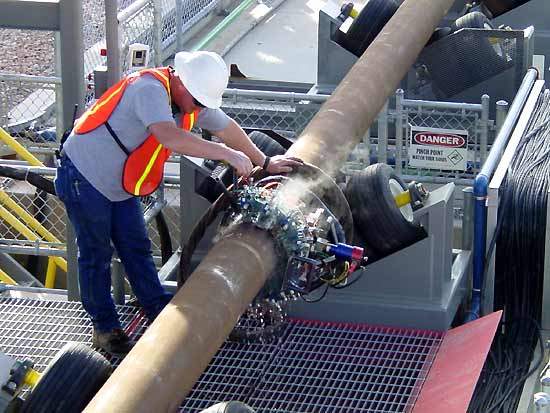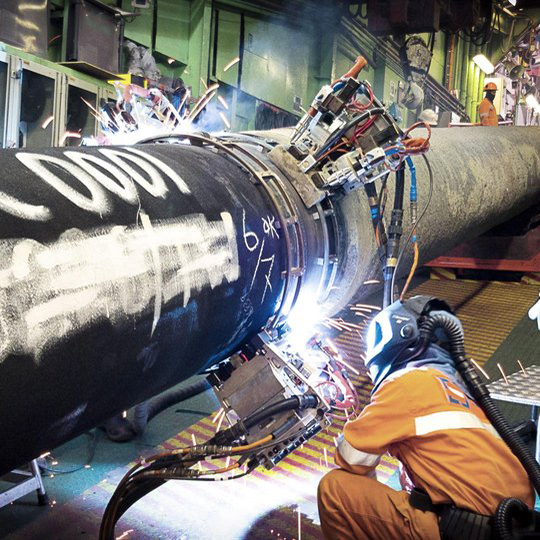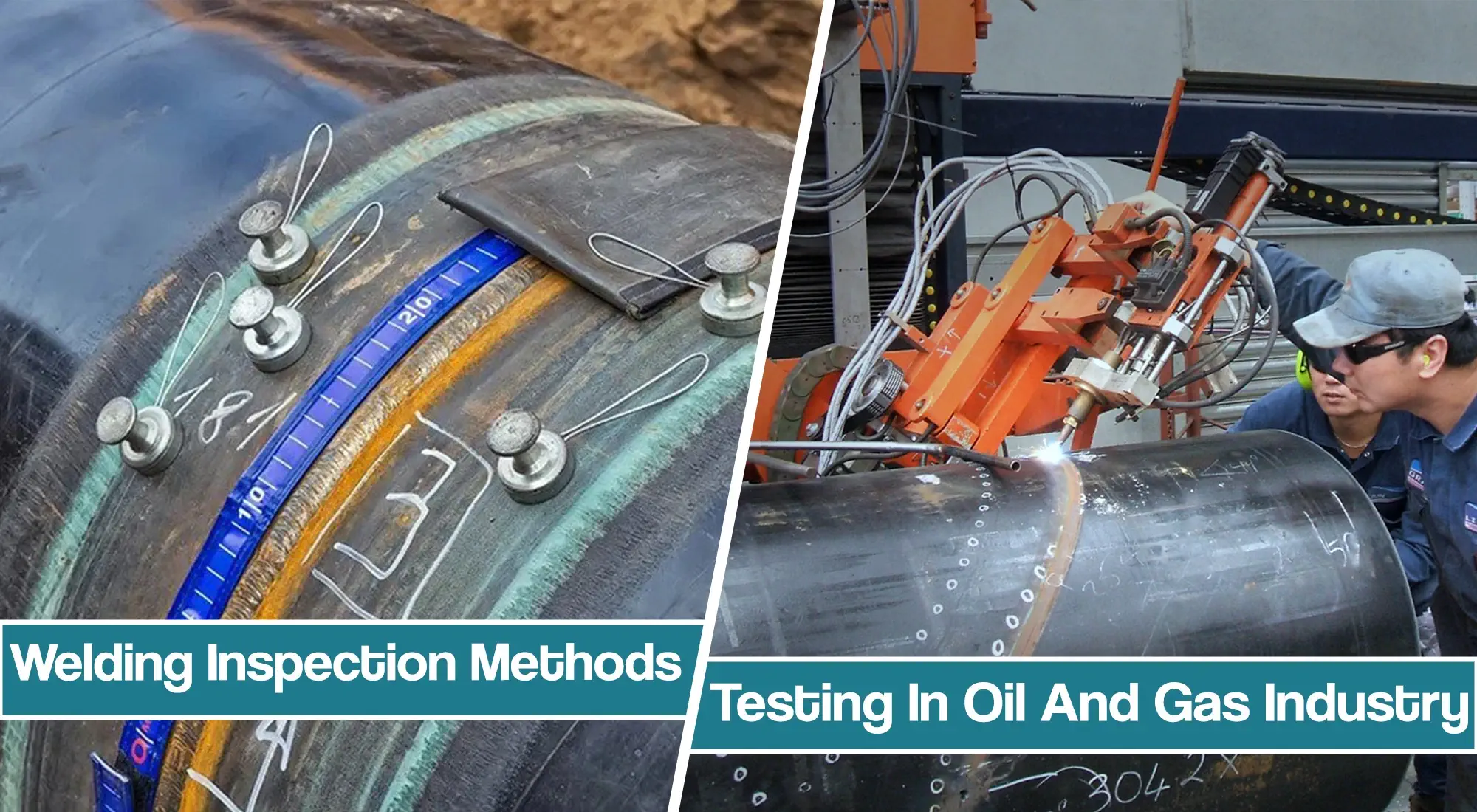Why Pipeline Welding Inspection is Important for Long-Term Pipeline Security
Wiki Article
Comprehensive Overview to Pipeline Welding Examination: Making Certain Honesty and Safety And Security in Pipe Construction and Upkeep
The stability and safety and security of pipes are critical in today's infrastructure landscape, highlighting the vital duty of welding assessment in pipeline building and construction and maintenance. An extensive guide on this subject not just highlights the necessity of assessing weld high quality yet likewise addresses the different inspection methods readily available, such as radiographic and ultrasonic testing. By comprehending common problems and their ramifications, stakeholders can execute ideal practices that guarantee compliance and longevity. Nevertheless, the complexities entailed in welding assessment raise relevant inquiries about sector requirements and the evolving technologies that may redefine these techniques.
Importance of Welding Assessment
Welding examination plays a crucial role in making sure the stability and safety and security of pipe systems. It acts as an essential process that validates the quality and reliability of welded joints, which are often the most prone factors in pipe building. With organized evaluation, assessors can recognize prospective problems such as splits, porosity, and insufficient blend, which may compromise the architectural stability of the pipe.The importance of welding assessment extends past mere conformity with market criteria; it also safeguards public health and wellness and the setting. Complete assessments can improve the longevity of pipe systems, decreasing the requirement for pricey repair work and downtime.
In addition to making sure safety and security and compliance, welding assessment promotes a society of high quality guarantee within companies. By prioritizing evaluation throughout the welding procedure, firms can build a track record for integrity and excellence, ultimately causing boosted consumer confidence and company chances (Pipeline Welding Inspection). Hence, the importance of welding inspection can not be overstated in the context of pipeline building and maintenance
Secret Welding Procedures
Different welding procedures are used in pipe building and construction, each with its very own benefits and applications. Amongst one of the most extensively made use of approaches are Secured Metal Arc Welding (SMAW), Gas Tungsten Arc Welding (GTAW), and Gas Steel Arc Welding (GMAW) SMAW is preferred for its versatility and ability to carry out well in different environmental problems, making it ideal for field applications.GTAW, commonly described as Tungsten Inert Gas (TIG) welding, is identified for its capability to create top notch welds with superb control over warmth input, making it excellent for thin-walled pipelines and stainless-steel products. GMAW, or Metal Inert Gas (MIG) welding, provides high deposition rates and is efficient for large-scale jobs, commonly utilized in the fabrication of pipelines in regulated atmospheres.
Furthermore, Submerged Arc Welding (SAW) is utilized for its deep infiltration and high performance, particularly in the building and construction of large-diameter pipelines. Each of these processes adds to the general integrity and safety and security of pipe buildings, enabling welders to choose one of the most proper technique based upon product type, task needs, and environmental problems. Comprehending these key welding processes is crucial for effective pipe welding inspection.
Usual Issues and Their Influence

Porosity, identified by tiny gas pockets entraped within the weld, deteriorates the material and can result in leaks. Splits, which might happen because of thermal anxieties or incorrect cooling, can circulate and result in architectural failing under pressure. Damaging, where the base steel is eroded along the weld bead, reduces the reliable cross-section of the pipeline, increasing the threat of crack.
Incomplete blend happens when the weld metal does not properly bond with the base metal, causing weak locations that may fall short under stress and anxiety. Slag incorporation, the entrapment of non-metallic product within the weld, can also damage the joint's stability. Recognizing and resolving these flaws early in the construction procedure is vital to guaranteeing the lasting reliability and safety and security of pipeline systems, therefore protecting both the environment and the facilities.
Inspection Tools and methods

Aesthetic evaluation is the initial line of defense, enabling inspectors to recognize surface abnormalities, misalignment, or various other noticeable flaws. Ultrasonic testing uses high-frequency acoustic waves to identify interior problems, giving precise deepness dimensions and defining problems without damaging the weld. Radiographic testing makes use of X-rays or gamma rays to create photos of the weld, making it possible for the identification of inner spaces, fractures, or incorporations.
Magnetic particle screening is particularly efficient for spotting surface area and near-surface suspensions in ferromagnetic products. This method involves applying an electromagnetic field and great iron particles to the weld, disclosing defects with the buildup of fragments at defect websites.
In addition to these strategies, specialized devices such as automated ultrasonic testing equipment and digital radiography systems improve inspection accuracy and effectiveness, making sure a detailed examination of pipe welds during construction and maintenance.
Finest Practices for Conformity
Abiding by his response ideal techniques for compliance in pipeline welding inspection is important for guaranteeing the stability and security of the framework. Organizations has to develop a thorough top quality monitoring system that straightens with sector criteria such as ASME, API, and AWS. This learn this here now consists of creating comprehensive welding procedures that specify the qualifications, materials, and strategies required for welders.Regular training and certification of inspection employees are important to preserve high proficiency levels. Assessors need to be acquainted with different non-destructive testing (NDT) approaches, consisting of ultrasonic screening, radiographic screening, and visual evaluation, to effectively identify potential defects.
Documentation plays an essential function in compliance; keeping exact documents of examinations, weld procedures, and personnel credentials assists to ensure traceability and liability. Arranged audits and reviews of welding techniques ought to be performed to determine locations for improvement and make certain adherence to established protocols.

Final Thought
Finally, the application of extensive welding evaluation protocols is vital for ensuring the integrity and safety of pipe building and construction and upkeep. By determining flaws and employing advanced examination methods, organizations can dramatically improve the high quality of welded joints. Sticking to finest practices cultivates conformity with sector requirements, ultimately guarding public health and go to this site wellness and avoiding ecological dangers. Continuous renovation in assessment processes will certainly contribute to the durability and reliability of pipe systems, highlighting the critical duty of welding evaluation in the industry.The stability and safety and security of pipes are paramount in today's facilities landscape, emphasizing the crucial function of welding examination in pipeline building and upkeep. Recognizing these key welding processes is necessary for reliable pipeline welding evaluation.
Sticking to ideal techniques for compliance in pipeline welding evaluation is vital for making sure the honesty and safety of the infrastructure.In final thought, the application of extensive welding assessment methods is paramount for ensuring the integrity and safety of pipeline building and maintenance. Constant enhancement in assessment procedures will contribute to the durability and dependability of pipeline systems, highlighting the vital function of welding evaluation in the market.
Report this wiki page